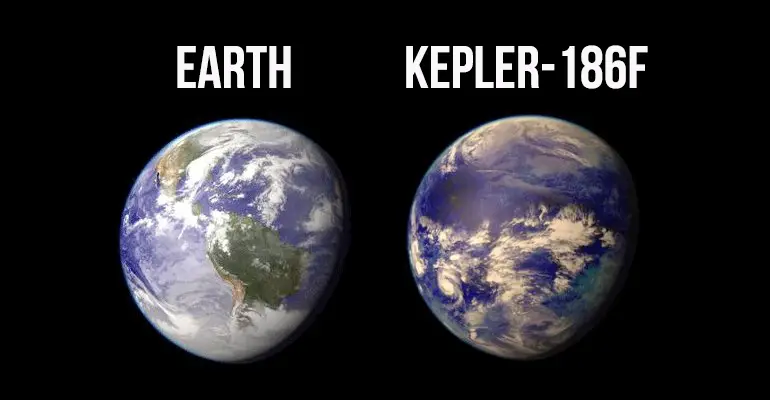
NASA’s Kepler Space Telescope recently
discovered an Earth-like planet orbiting a nearby star within the
habitable zone of our galaxy. Kepler-186f is approximately 500
light-years from Earth in the Cygnus constellation.
The habitable zone, also known as the
Goldilocks zone, is the region around a star within which planetary-mass
objects with sufficient atmospheric pressure can support liquid water
at their surfaces. While it has been estimated that there are at least
40 billion Earth-sized planets orbiting in our Milky Way Galaxy, this
particular discovery is labeled the first Earth-sized planet to be found
in the habitable zone of another star.

What does this mean?
In addition to Kepler-186f, there are 4 other
planets that orbit a nearby star within the Kepler-186f system. What
this means is that if the nearby star to this planet is similar to our
Sun, then the probability of life on this planet exponentially rises.
“We know of just one planet where life
exists – Earth. When we search for life outside our solar system we
focus on finding planets with characteristics that mimic that of Earth,”
said Elisa Quintana, research scientist at the SETI Institute at NASA’s
Ames Research Center in Moffett Field, Calif., and lead author of the
paper published today in the journal Science. “Finding a habitable zone planet comparable to Earth in size is a major step forward.”
The nearby star to Kepler-186f has half the
mass and size as our solar system’s Sun and only receives one-third of
the energy that we receive from our Sun. Kepler-186f orbits its star
once every 130 days.
Do you think there is life on other planets? Comment below!
References:
1. http://www.nasa.gov/ames/kepler/nasas-kepler-discovers-first-earth-size-planet-in-the-habitable-zone-of-another-star/
2. http://en.wikipedia.org/wiki/Planetary_habitability
1. http://www.nasa.gov/ames/kepler/nasas-kepler-discovers-first-earth-size-planet-in-the-habitable-zone-of-another-star/
2. http://en.wikipedia.org/wiki/Planetary_habitability
No comments:
Post a Comment